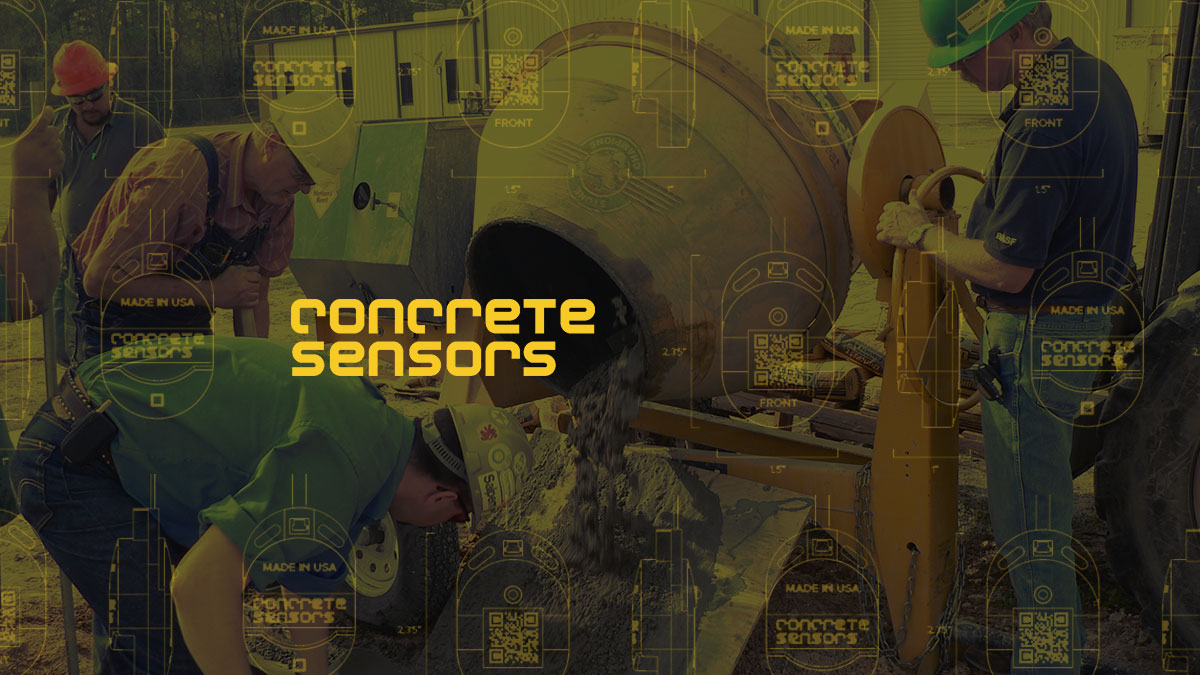
In an ever-changing, increasingly technological built environment, new innovations are continually paving the way toward more efficient construction jobsites and projects. Remedying age-old, inefficient processes, however, is a slow battle. Contractors are hesitant about new technology, though, because adoption can also be synonymous with disruption of workflow.
Working with concrete, and in particular, pouring and curing it, can be risky without close monitoring and accurate information. In response to the long-standing issues of working with concrete, and contractors’ reluctance to integrate new technology, Concrete Sensors is working to provide intuitive solutions that aren’t just accurate — they’re easy to use and complement existing systems and workflows.
The company uses a combination of hardware, software, laboratory testing, and data to send strength, temperature, and relative humidity data directly to users’ mobile devices when working with concrete. The sensors, which are easily placed in the concrete, have bluetooth capability that can penetrate the concrete and help GCs make more informed cost-saving decisions.
“I was building a school in the Boston area and it was cold outside,” recalled Brendan Dowdall, Founder and CEO of Concrete Sensors. “The school kept asking me how we knew it was going to cure appropriately, and that was a great question.” Dowdall asked the contractor and ready-mix crew, only to get vague answers in response. “I couldn’t go back to the school and tell them to just trust me,” Dowdall lamented.

Hence, the spark that ignited Concrete Sensors was lit. The data that the company’s solution provides allows contractors to make real-time decisions that enable faster schedules and significantly reduce the use of cylinders. “Concrete in the field cures differently than concrete in a cylinder,” Dowdall explained. “What we do is provide real-time data on the curing and the drying of concrete. We turn what were lagging indicators into real-time indicators and predictive data.”
Of course, these types of sensors are only as useful as the software they connect to. Concrete Sensors has developed their own software platform to provide actionable data to their clients. What differentiates Concrete Sensors from their competitors is their in-house concrete lab which takes a scientific approach to aggregating accurate data on different concrete.
“This technology is valuable for any concrete scope, especially when we’re trying to act as quickly as possible,” John Glantz, Concrete Division Coordinator at Q&D Construction, explained. “Cylinder breaks are good to confirm the specified mix that was delivered, but we need to know our actual in-place concrete strength, temperature, and relative humidity in real-time.”
The ease of implementing Concrete Sensors’ hardware and software is echoed by some of the world’s most impressive GCs. Gilbane, Skanska, Turner, and many more rely on the actionable data the company provides to improve the bottom line of working with concrete.
Many disruptive technologies interrupt workflow in a negative way, making adoption near-impossible, even despite a significant return on investment in the future. Built industry tech could take a cue from Concrete Sensors in that regard. They’ve found the formula to be positively disruptive.
BuiltWorlds partnered with Concrete Sensors to bring you this article.


Discussion
Be the first to leave a comment.
You must be a member of the BuiltWorlds community to join the discussion.